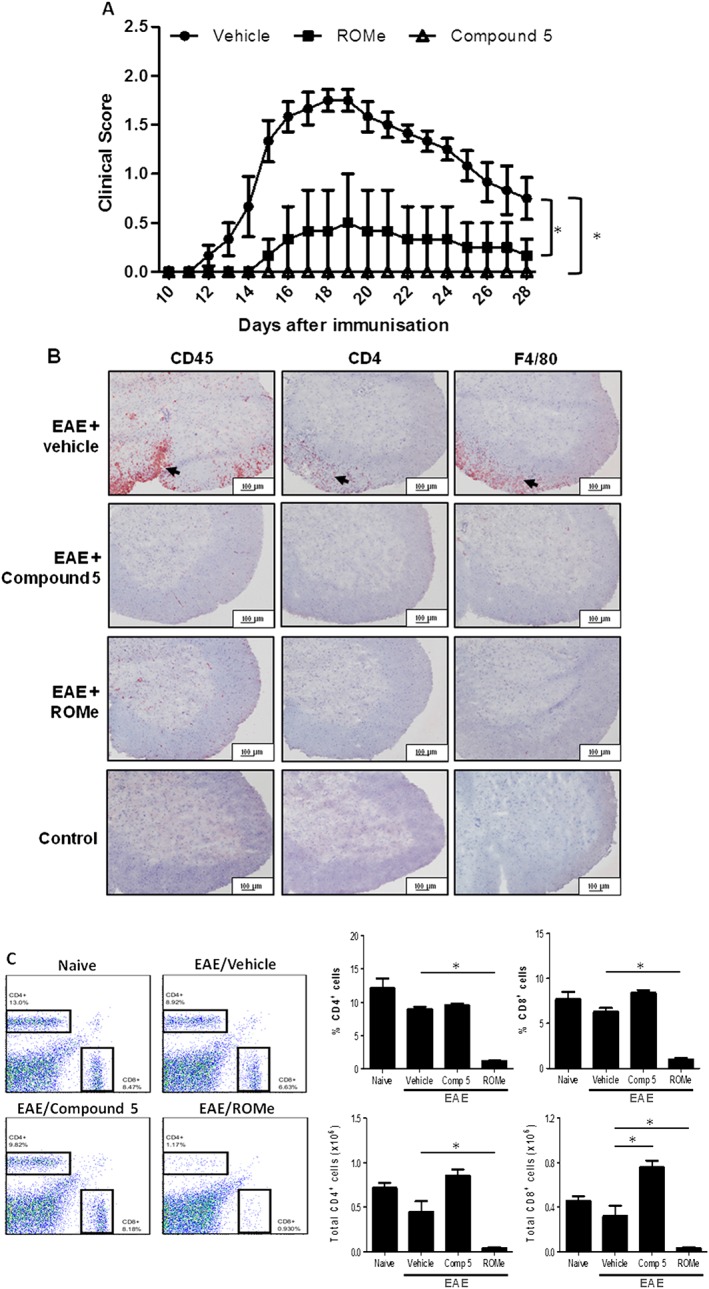Figure 5.

Compound 5 or ROMe attenuate disease progression in EAE. EAE‐treated mice were treated with vehicle alone or dosed with compound 5 (12.4 mg·kg−1) or ROME (3.2 mg·kg−1). (A) Clinical scores are plotted against time and are represented as means ± SEM for n = 6 mice per treatment. *P < 0.05 for compound 5 or ROMe, significantly different from vehicle; repeated measures ANOVA. (B) Immunohistochemical staining of representative spinal sections with specific anti‐CD4, anti‐CD45 or anti‐F4/80 antibodies. Arrows denote infiltrating cells. Results are representative of n = 6 mice per treatment. We have included immunohistochemical staining of spinal sections from control mice (representative of results from 10 naïve mice) to show that there are no infiltrating inflammatory cells. (C) FACS analysis of CD4+ and CD8+ cells. FACS plots are representative of n = 6 animals per treatment group for vehicle, compound 5 and ROMe and 3 for naïve animals. Graphs show combined data; bars represent mean ± SEM. *P < 0.05, significantly different from vehicle; one‐way ANOVA.
